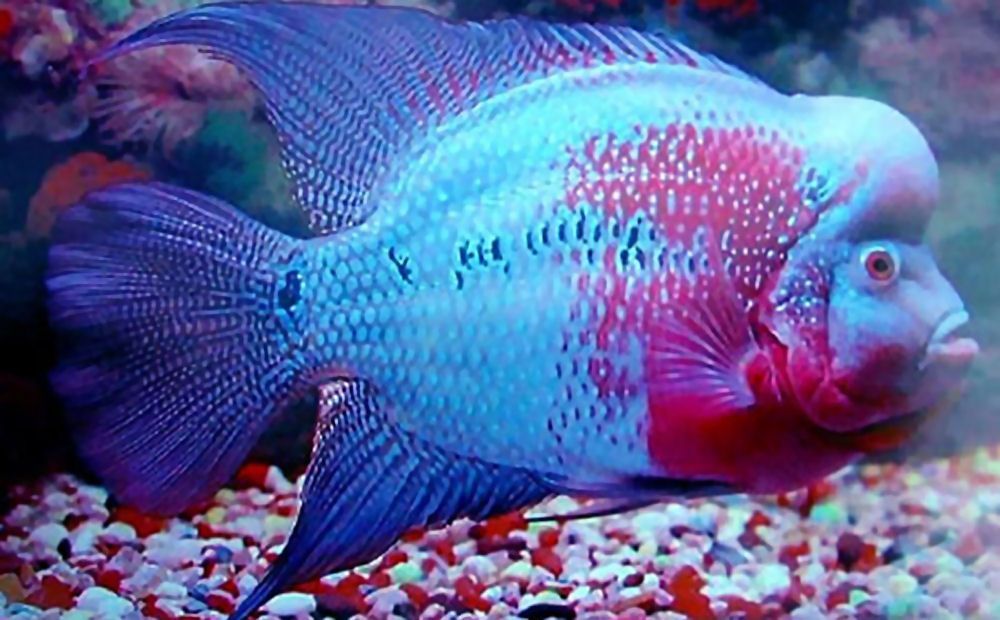Introduction
The underwater realm is home to an incredible variety of marine life, each species exhibiting remarkable adaptations that have allowed them to thrive in their respective habitats. Among these fascinating creatures are fish species with big heads, capturing the attention and curiosity of researchers and enthusiasts alike. These large-headed fish possess unique characteristics that contribute to their survival and behavior. In this article, we will delve into the world of fish with big heads, exploring their evolutionary significance, advantages, adaptations, and examples of species known for their prominent craniums.
Why Do Certain Fish Have Big Heads?
The oversized heads of some fish species serve various purposes, each influenced by the specific environmental factors in which they reside. One primary reason for their enlarged craniums is the need for enhanced sensory perception. Large heads often accommodate specialized sensory organs, such as well-developed eyes, nostrils, and lateral lines, which enable these fish to navigate their surroundings with precision. These adaptations allow them to locate food sources, detect predators, and communicate effectively within their aquatic ecosystems.
Advantages and Adaptations
The advantages of having a big head in the underwater world are numerous. Firstly, it provides these fish with a distinct advantage when it comes to feeding. Their large mouths allow them to consume prey items that might be otherwise inaccessible to smaller fish. This enables them to occupy unique niches within their ecosystem, reducing competition for resources.
Additionally, fish with big heads often possess specialized jaw structures, including robust muscles and unique dentition, allowing them to exert powerful biting forces. This adaptation aids in capturing and consuming larger prey, increasing their chances of survival and successful reproduction.
Moreover, the prominent craniums of these fish often play a role in species recognition and mate selection. A well-developed head, with vibrant colors or striking patterns, can be a signal of genetic fitness and reproductive potential. It allows individuals to attract mates and establish breeding territories, ensuring the continuation of their lineage.
Examples of Fish Species with Large Heads
The underwater world is teeming with fish species that exhibit disproportionately large heads compared to their body size. Let’s explore a few remarkable examples:
- Goliath Tigerfish (Hydrocynus goliath): Found in the Congo River basin, this formidable predator possesses a massive head armed with long, razor-sharp teeth. With its powerful jaws, it can capture and devour prey as large as its own body size.
- Napoleon Wrasse (Cheilinus undulatus): This iconic reef fish boasts a majestic humphead that sets it apart from other species. The enlarged forehead of the Napoleon Wrasse serves as a display feature during courtship rituals, making it a visually striking and sought-after species for underwater photographers.
- Hammerhead Sharks (Family: Sphyrnidae): Known for their distinctive hammer-shaped heads, these sharks possess specialized sensory organs called ampullae of Lorenzini, which detect electrical signals emitted by potential prey. This unique head shape enhances their ability to scan and locate hidden prey, giving them a significant advantage in hunting.
The Evolutionary Purpose of Big Heads
The evolution of big heads in fish can be attributed to a combination of factors, including predation, competition, and niche specialization. Over time, natural selection favored individuals with larger heads that offered increased sensory perception, improved feeding capabilities, and enhanced reproductive success.
The development of specialized adaptations, such as powerful jaws and unique dentition, allowed these fish to exploit new food sources and occupy distinct ecological niches. This diversification ultimately contributed to the overall biodiversity of aquatic ecosystems, creating a delicate balance of species interactions and coexistence.
Conservation Efforts for Fish with Large Heads
As with many other unique and specialized species, some fish with big heads face conservation challenges. Human activities, such as overfishing, habitat destruction, and pollution, can directly impact these creatures and their delicate ecosystems. Several fish species with large heads, including the Goliath Tigerfish and Napoleon Wrasse, have been classified as vulnerable or endangered.
Conservation efforts are crucial to protect these remarkable species and ensure the long-term sustainability of their habitats. These efforts may involve implementing fishing regulations, establishing marine protected areas, and raising awareness about the importance of preserving biodiversity in our oceans.
Feeding Habits and Growth Patterns
Fish with big heads often exhibit distinct feeding habits and dietary preferences compared to other fish species. Their enlarged mouths and powerful jaws allow them to consume a wide range of prey items, including smaller fish, crustaceans, and even small mammals in some cases. This versatile diet contributes to their ecological role as top predators or opportunistic feeders within their respective ecosystems.
Research on the growth patterns of fish heads has shed light on the intricate mechanisms underlying their development. These studies help scientists understand the genetic and environmental factors that influence head size and shape. By investigating these patterns, researchers gain insights into the evolutionary forces that have shaped these fish and their unique cranial structures.
Conclusion
Fish with big heads exemplify the wonders of aquatic evolution, showcasing remarkable adaptations and specialized characteristics. Their oversized craniums serve a variety of purposes, from enhanced sensory perception to improved feeding capabilities and reproductive success. Through the study and conservation of these unique species, we gain a deeper understanding of the intricate web of life that exists beneath the waves. Let us embrace the beauty and diversity of fish with big heads, cherishing these marvels of nature’s ingenuity.









